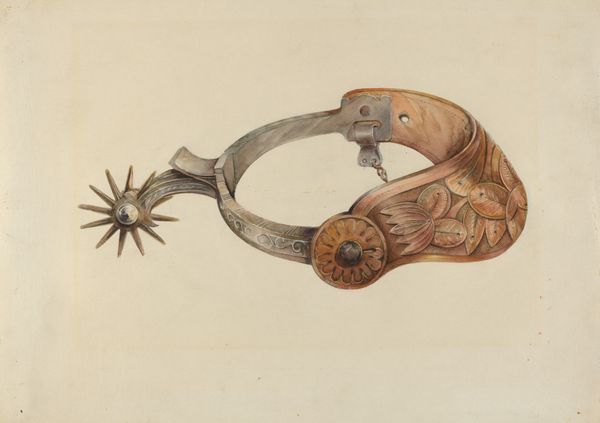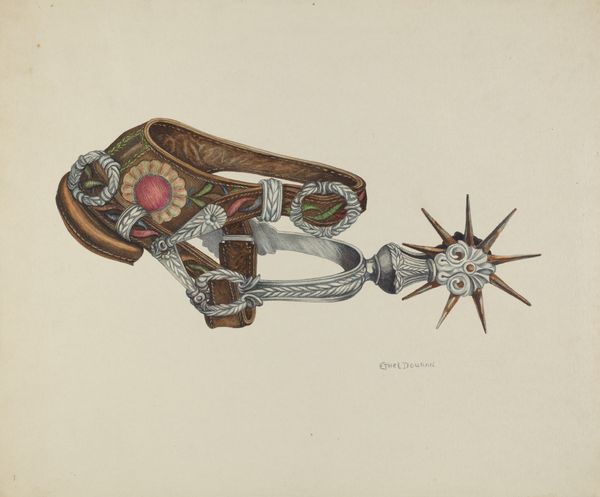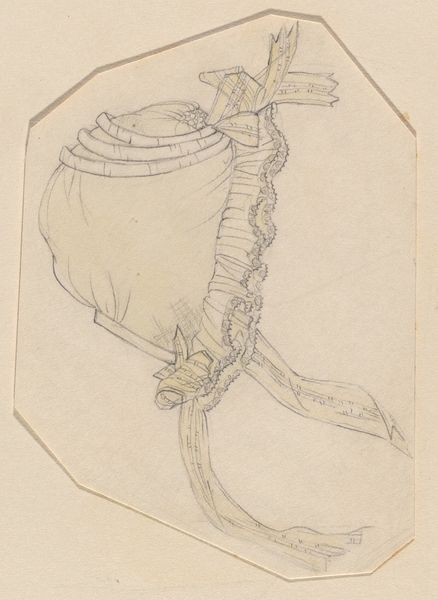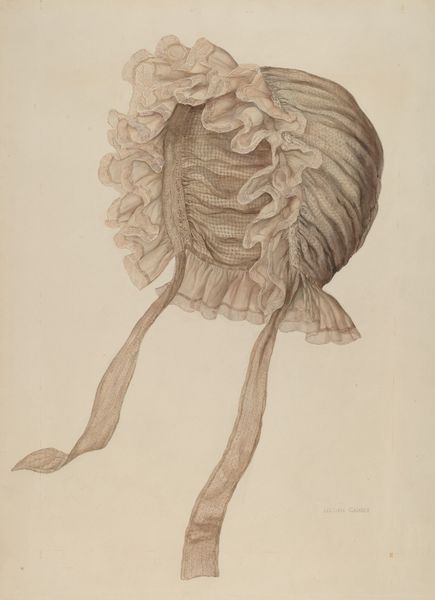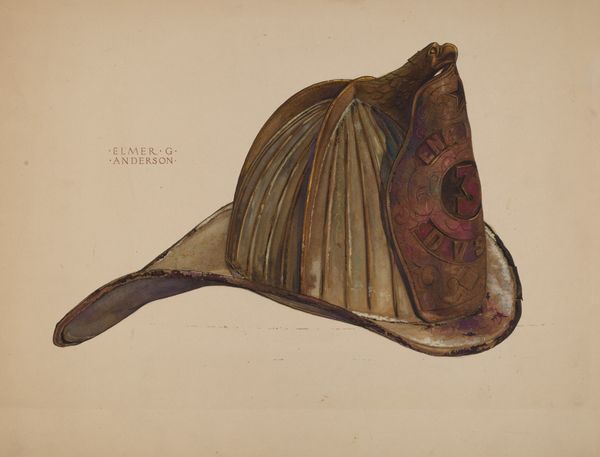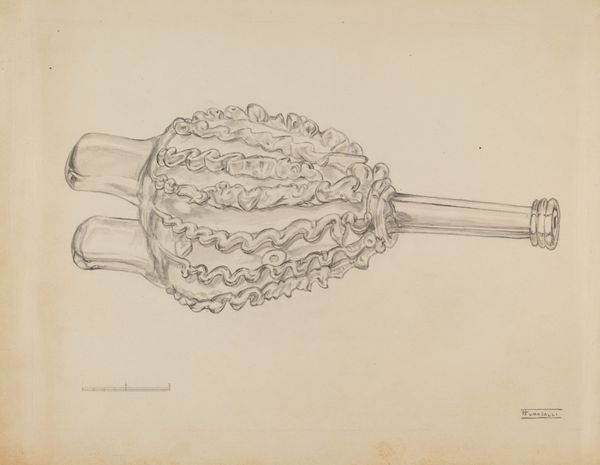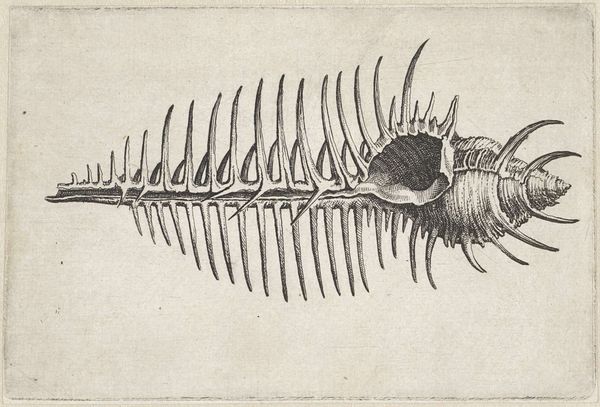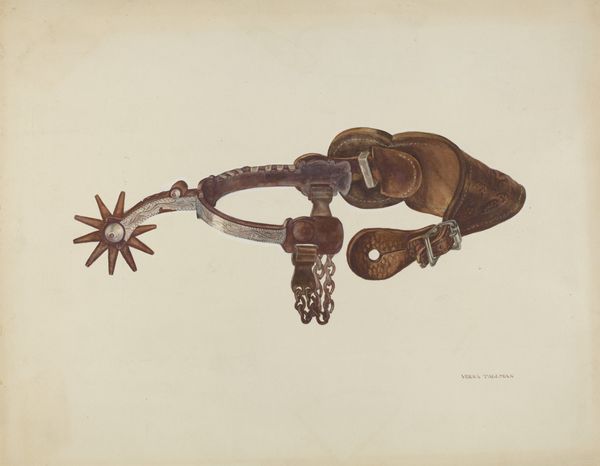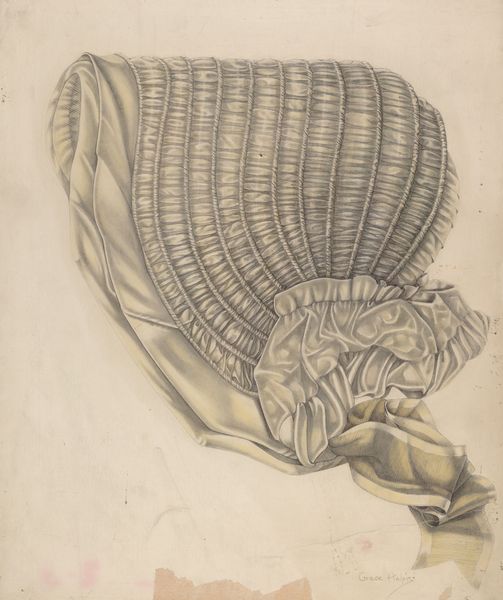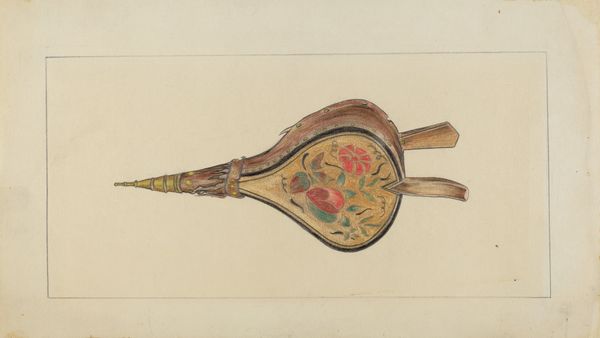
drawing
#
drawing
#
geometric
Dimensions: overall: 23 x 29.1 cm (9 1/16 x 11 7/16 in.)
Copyright: National Gallery of Art: CC0 1.0
Curator: The drawing before us, titled "Bellows Bottle," was rendered by John Tarantino around 1936. It's a fascinating example of his work, meticulously captured in drawing. Editor: It certainly catches the eye. The bottle appears almost dreamlike, with those swirling patterns in soft pinks, whites, and purples. There's a sense of gentle movement despite it being a static image. The contrasting linear, ridged structure on its stem, and then the soft, curved bulb gives it an intriguing character. Curator: I find it significant that Tarantino chose such an object, a bottle – commonplace, yet elevated here through artistic representation. Consider the historical context: the 1930s were a time of economic hardship and social upheaval. A seemingly simple, even decorative object can offer a form of escapism, suggesting a longing for beauty and refinement amidst a stark reality. Editor: It makes me wonder, though, about the symbolism of the form itself. A bottle implies containment, a holding of something precious or volatile. But also the shape—a teardrop that narrows at its mouth and splits to two? It feels related to processes like distillation and alchemy—knowledge gained and a change that may have both bitter and relieving consequences. The very color palette—the rose color—often alludes to love, and I see something profoundly emotional conveyed through that symbolism, even the object's possible use. Curator: That's an astute observation, how those colors could invoke concepts about love. By choosing such a delicate color palette, it suggests an awareness of, and perhaps a critique of, traditional notions of femininity and domesticity, common issues faced in the thirties and beyond. Tarantino, through his skillful rendering, is inviting us to reconsider the power of ordinary objects to reflect social and gendered expectations. Editor: And what of that curious emblem on the bottle, something like an elegant wing, almost feather-like. Perhaps a kind of protective element guarding the liquid contained within, adding another layer to the unfolding symbolism? It even seems that a figure or character has been placed at the foreground and set within an idyllic frame, reminiscent of the "Swan Lake." Curator: The level of meticulousness and precision, particularly the execution of linear ridges, draws me back to how such objects during the Great Depression represent consumer goods. One might assume these objects represented luxury, desire, escapism; but on another end, consumer objects produced income, provided employment. And the attention of the bottle with this color might have further signaled new ideas of luxury: products targeted to women through advertisements that use bright colours, new fashion aesthetics and tastes. Editor: Considering your insights, looking again, there is something almost otherworldly about its representation. More than just an object to see and own, the drawing feels more of a memory—and one imbued with a dream-state color. Thank you. Curator: And thank you, for helping to interpret it from different perspectives and uncover a story that connects society and intimacy, a convergence between then and now.
Comments
No comments
Be the first to comment and join the conversation on the ultimate creative platform.
